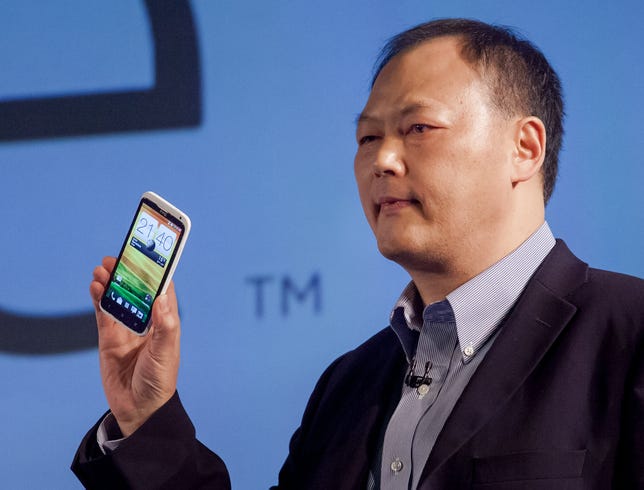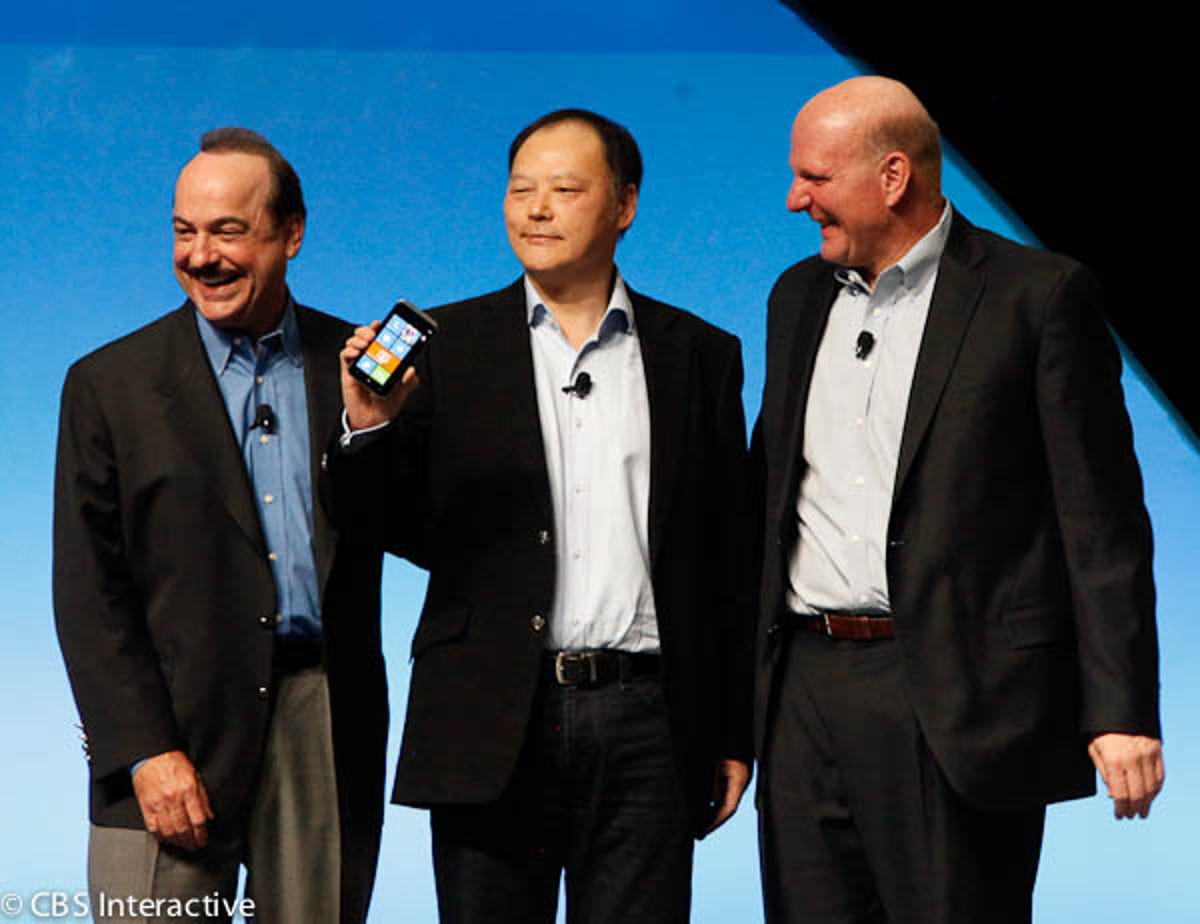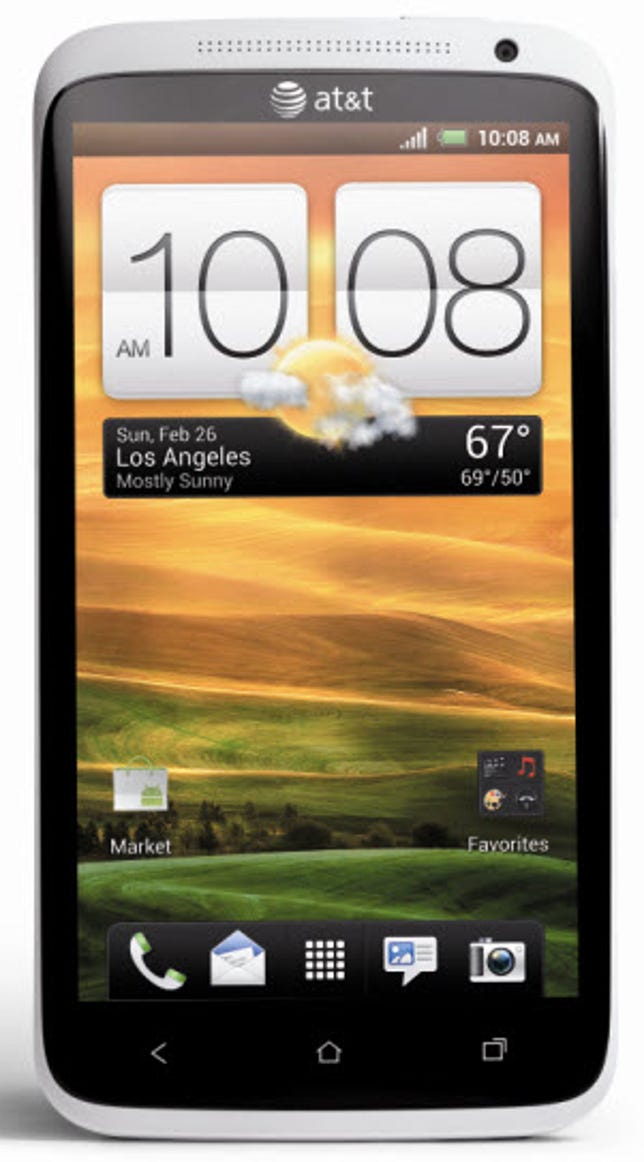HTC plans to eschew the “quiet” part of its well-worn tagline, “Quietly Brilliant,” as it looks to mount a comeback in the smartphone business.


HTC
The Taiwanese company plans to go bolder with its messaging to consumers and the media, relying less on joint marketing campaigns with the carriers and standing more independently to tell the HTC story. It will focus more on its products’ advantages and better utilize more social media to recapture some of that loss buzz. It also plans on seeking out influential celebrities and “superfans” with a genuine appreciation for HTC’s phones for more authentic endorsements.
The company is also pegging its turnaround on its One franchise of flagship smartphone, a renewed presence in Windows Phone 8, and further expansion into key markets such as China and India.
That’s according to Jason MacKenzie, head of HTC’s sales and marketing, who sat down with CNET yesterday to discuss the company’s challenges, and how it plans to address them.
Once the darling of the smartphone world, HTC has hit a rough patch, having stumbled hard and fast late last year, and languished this year. It’s not a coincidence that the company’s struggles come as Samsung Electronics surged ahead to become the largest smartphone vendor, sharing a lofty leadership position alongside Apple and its iPhone. Some are unsure about HTC’s prospects.
“I think it will be really hard for HTC to get back to where it was before in terms of shipments and
profits,” said Jan Dawson, an analyst at research firm Ovum.
Related stories
- HTC’s Q2 profit plunges 60 percent amid turnaround struggles
li> - Sprint and HTC look to Evo 4G LTE for a comeback
- HTC gets serious with its ‘One’ smartphone series
- Has HTC peaked?
The key dilemma for HTC: it isn’t the only company facing this kind of situation. From Nokia to Research In Motion, the smartphone field is filled with players looking to recapture past glory.
And it’s easy for HTC to get lost in the shuffle with so many companies scrambling for attention in the mobile world. Take this week, when Nokia, Motorola Mobility, and Amazon all announced new products. Apple is expected to unveil a new iPhone next week. HTC has its own event on Sept. 19.
HTC’s comeback attempt began with the One series of phones, which debuted in February at Mobile World Congress. While the phones were critically praised, they only enjoyed a brief moment in the sun before the hype cycle moved on to the Galaxy S III. MacKenzie, however, argued that they performed better than people expected, with the flagship One X selling twice as many units as any other HTC product in the first four months in the market.


Now playing:
Watch this:
Samsung Galaxy S3 vs. HTC One X
5:28
There’s still a lot to like about HTC, MacKenzie said. While the company’s profits and revenue are down sharply from a year ago, he noted that the company remains profitable, with Apple and Samsung being the only companies in the industry that can boast the same claim. While the One phones were only available at AT&T and T-Mobile USA in the U.S., they’re starting to pick up recognition. Its revamped Sense user interface is a much cleaner and easier experience than previous iterations. And, of course, the company still makes a decent phone.
For all the talk of HTC’s struggles, the company has actually quietly made some progress in the recent months. The company owned 6.1 percent of the global smartphone market in the second quarter, down significantly from a year ago, but a slight increase from the first quarter, according to a Gartner study.
Still, whether HTC can parlay those advantages into more attention for its products remains to be seen.
Recapturing that buzz
It’s easy to forget, but HTC is a fairly young company that got its start building phones for other companies and carriers, a practice known as white-labeling. It’s an even younger one when factoring its more recent decision to go public with its brand; it launched an advertisement promoting its own brand for the first time in November 2009.
HTC’s rapid rise came as a result of calculated bets on the right technology and platforms. The company was the first to partner with Google to build an Android smartphone, the G1. It also built the Nexus One, the first Google-approved device in the Nexus lineup. When Sprint Nextel needed to build a phone for its 4G WiMax network, HTC came up with the Evo 4G. The company later built the first 4G LTE smartphone for Verizon Wireless, the Thunderbolt.


Marguerite Reardon/CNET
Its relentless adoption of the latest trends, paired with its Sense user interface, made HTC phones a desirable product. The Evo remains Sprint’s best franchise, only surpassed by the iPhone, while the original Droid Incredible for Verizon Wireless was a hot item. In a little more than a year, HTC went from an anonymous manufacturer of other people’s phone to a well-known brand.
Since then, the company experimented with too many different products, expanded too fast, and became bogged down by too much bureaucracy and bloat, leaving HTC where it is today: still a significant player, but more a challenger than a leader in smartphones trying to find its way again.
So how does HTC get some of that buzz back? MacKenzie said the company needs to improve how it communicates some of the features and advantages of its phones. The goal is to get more consumers walking into the store with their mind made up on buying an HTC device, which means a higher focus on social engagement and doing a better job of driving product awareness.
“We’ve got a great product. When I demo the camera, I always get a ‘wow’ reaction,” MacKenzie said. “We need to deliver that ‘wow’ in our communication.”
HTC is also on the look out for “superfans” or celebrities who naturally use the company’s products with the hopes of building a list of influencers. It hopes to lean on these influences and find ways to “amplify their message” to build some excitement around products. Still, MacKenzie said he doesn’t want to pay celebrities just to use its products, noting that consumers see through that kind of marketing ploy.
As a much smaller company, HTC lacks the resources of Apple or Samsung when it comes to marketing, and needs to be selective in where it can invest in.
“We can’t market like Apple or Samsung,” he said. “There’s no brute-force marketing here.”
Still, the company will attempt more solo campaigns, allowing for a “pure HTC” message to come through, rather than one that’s shared with a carrier partner.
Betting on the One
HTC put all of its horse behind the One brand, and the company continues to support it. One was the company’s attempt to simplify its brand and focus on a few quality phones, instead of the scattershot approach it previously took.


Stephen Shankland/CNET
MacKenzie had previously compared the One to Google’s own Nexus brand, which represents the latest innovation in Android.
But perhaps a more apt comparison would be to Samsung’s Galaxy S. Samsung positioned the Galaxy S as its flagship smartphone, and while it had a rough start, the brand has become a world-beater, with its announcement the stuff of Apple events. But it took three generations of devices before Samsung had a blockbuster brand with the Galaxy S, with the Galaxy S III now available at every major U.S. carrier.
MacKenzie acknowledged that HTC doesn’t have the luxury of waiting through three generations of One smartphones before it achieves a similar strata, but declined to talk about the company’s internal expectations. He said that in two months, the One phones were able to build the same kind of awareness that HTC enjoyed after two years.


Sarah Tew/CNET
But HTC’s attempt to simplify things down to a ubiquitous brand hit a snag in the U.S. While AT&T sold the One X and T-Mobile carried the One S, both Sprint and Verizon Wireless insisted on their own custom phones. Sprint wanted another Evo, the Evo 4G LTE, while Verizon sold the Droid Incredible 4G LTE. If you wanted the One X, you could only go to AT&T, or buy the pricey unlocked version. So much for a single go-to brand.
“The One series was supposed to give them new focus and a big boost, and it really doesn’t seem to have done that,” Dawson said.
While the carriers represent HTC’s lifeline to the customers, they are also the biggest impediment to the company’s strategy. MacKenzie dismissed the notion that the carriers are hurting HTC, and insisted that its relationships with them have never been stronger.
Some carriers are looking for a little proof that the One brand is strong enough to justify carrying without an exclusive, something that only Apple and Samsung have been able to pull off. MacKenzie said he was having “real-time conversations” with the carriers to make that happen.
“They are motivated to see us succeed,” he said.
It’s easy to forget that when the first generation of Galaxy S phones launched, they showed up on the four national carriers with their own forgettable names, from the Vibrant to the Captivate.
Its initial flagship smartphone, the One X, appears to have done better than expected, despite some early issues. The phone, alongside the Evo 4G LTE, was temporarily banned from the U.S. because of a patent dispute with Apple. MacKenzie said he was encouraged by the early performance of the phone.


Now playing:
Watch this:
The powerful HTC One X on AT&T
2:39
“We’re off to a good start. Relative to the market, we can do better,” he said.
The market, unfortunately, hasn’t been kind to HTC in recent months. Analysts note that at Sprint, traditionally its strongest partner, the company’s phones were pushed aside once the iPhone showed up.
“HTC has never seemed to recover from Apple’s expansion to Sprint as the HTC Evo products were Sprint’s key high-end focus,” said Gartner analyst Hugues de la Vergne.
Continued Windows Phone support
While HTC hasn’t shown off any of its Windows Phone 8 devices, MacKenzie said the company plans to go strong with the Microsoft platform.
“I feel very good about the partnership with Microsoft,” he said. “We’re expecting big things.”
Could HTC introduce a singular One-like brand for its Windows Phone lineup? MacKenzie would only say “stay tuned.”
Aside from Nokia, HTC has arguably been the most consistent partner to Microsoft for Windows Phone. The company had more Windows Phones during the 2010 launch than any other vendor. It has also consistently worked to bring out high-profile new products, with CEO Peter Chou sharing a stage with AT&T’s mobile CEO, Ralph de la Vega, and Microsoft CEO Steve Ballmer at AT&T’s Consumer Electronics Show event.


Corinne Schulze/CNET
Unfortunately for HTC, its product, the Titan II, was overshadowed by AT&T’s big push of Nokia’s Lumia 900.
MacKenzie believes his Windows Phone products will stand up against Nokia’s latest flagship Lumia 920, and Samsung’s ATIV S. He added the company is putting a lot of resources behind the platform.
“Our goal is to make the best smartphones, period,” he said.
Software, not hardware
HTC’s smartphones have always stood out for their innovative design. Unfortunately, hardware alone isn’t going to cut it.
The company needs to work on improving the suite of software and services around its phones. HTC’s experiment with Dr. Dre’s Beats headphones was a flop, and with the rapid advancement of hardware, touting features such as a superior camera will only buy the company a momentary edge.


AT&T/HTC
“People don’t buy phones for the audio features, let alone the accessories, and they don’t really buy them for the materials either — they buy them because they like the way they look and feel in the hand,
and more importantly they like the software and services that come with the phone,” Dawson said.
A streamlined Sense is a good start, but HTC needs to build on that with more of a focus on services such as music and video, or unique apps that help it stand out from the pack.
A smart move for HTC has been to target several growing markets. Despite the ultra-competitive nature of the Chinese market, where homegrown players such as Huawei and ZTE have a dominant position, HTC has been making some strong inroads.
“We’ve seen tremendous success,” he said.
The company has only recently made an effort to enter China in the last two years, and over the first six months of the year, HTC has seen its market share double to 6 percent, MacKenzie said, adding the company has grown by following its strategy of working closely with the carriers and building its own app store with Google Play banned in the country.
Up next: the HTC One SC for China, which features a unique back with a large logo. The company announced the phone today.
With the smartphone business still emerging in India, HTC has moved to build an early position in that market as well.
That doesn’t mean HTC is taking its eye off the U.S. market, and doesn’t believe the HTC story is ending there any time soon.
“We still see the U.S. as an opportunity for growth,” he said.



